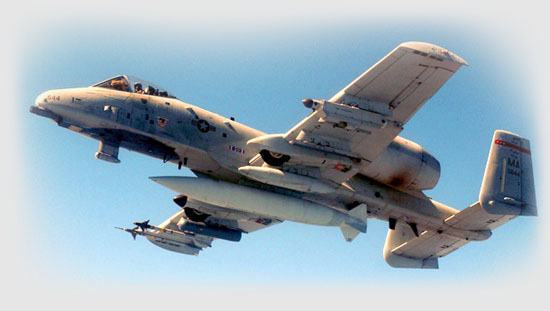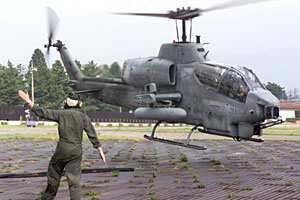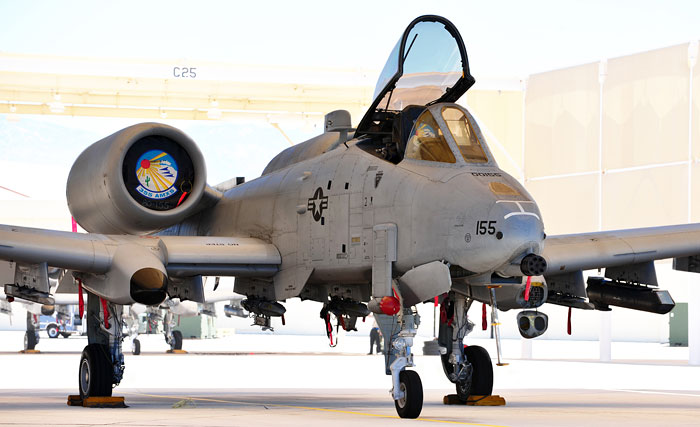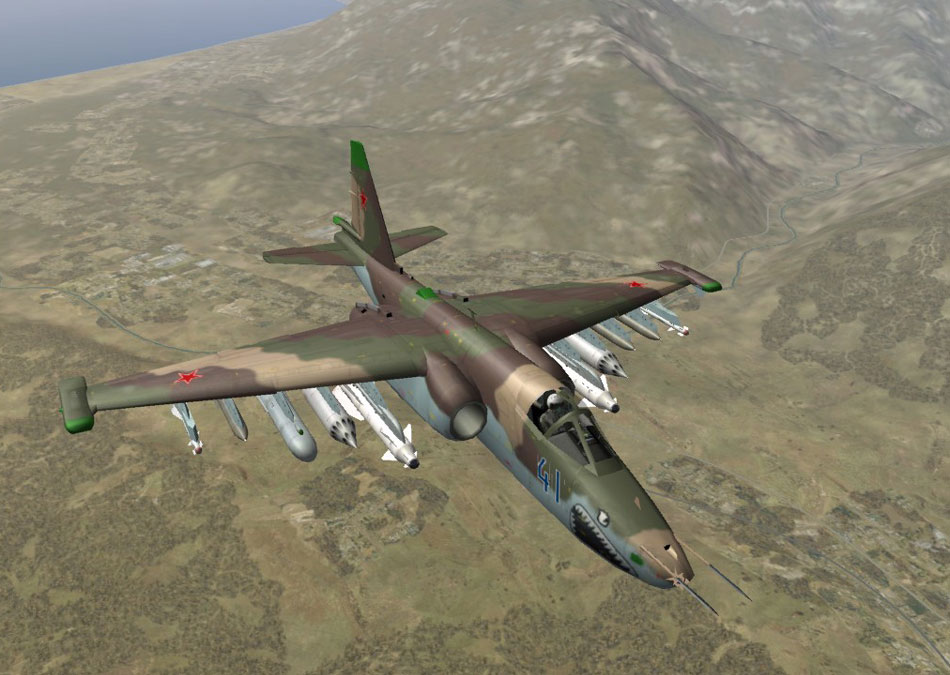by Guest Writer Erik “EinsteinEP” Pierce
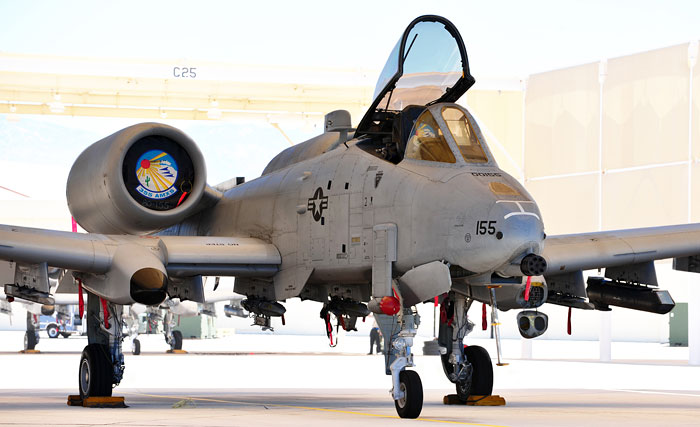 |
| The A-10C Thunderbolt II “Warthog” (Photo courtesy United States Air Force) |
The A-10 Thunderbolt II is one of the more polarizing fighter aircraft in the United States Air Force. People seem to be either completely in love with the “Warthog” — its unofficial nickname — or hate it. Detractors laugh at the A-10’s slow speed, joking that it is the only fighter aircraft to suffer bird strikes from the rear, while fans point out that the plane was built around a 30mm cannon that spits out 3900 rounds per minute that each have the kinetic energy of a 12-lb. bowling ball going 600 mph.
In the end, the nay-sayers have it all wrong: calling a close-support aircraft “slow” is like calling a defensive lineman “heavy”. The so-called “modern” jets may have all the bells and whistles of a luxury sedan, but when your own guys are on the front line with bad guys moving in on them, cruising low and slow while loaded for bear and carrying a turn radius of about a 1/4 mile is the only way to fly.
A-10 lovers have even more to be excited about since the A-10C became operational in 2007. At first glance, however, it doesn’t seem like there’s anything different about this new Warthog, except maybe some aesthetic changes to the cockpit. What is an “A-10C” anyways, and why does this ‘Hog get its own letter designation? To better answer these questions we need to revisit the development history of the Fairchild Republic A-10 Thunderbolt II. Since I never really enjoyed history, we’ll do this quickly and with pictures.
 |
| The A-10A Thunderbolt II “Warthog” (Photo courtesy United States Air Force) |
The first A-10A rolled off the Fairchild production line in 1973 in Farmingdale, New York to a largely unenthusiastic Air Force. When the purchase order for the A-10 was cut, the Air Force acquisition community was focused on the close air support aircraft that was badly needed in the type of conflict going on in Vietnam. Due to the realities of multimillion-dollar development programs, the A-10 took time to produce and by the time it was ready to do its job, the Vietnam War was over and the Air Force just wasn’t looking for a close support aircraft anymore. The A-10 had come late to its own show.
In 1982, Fairchild produced the A-10B. Marketed as the Night/Adverse Weather System (N/AWS), the A-10B was a two-seater variant of the Warthog that was intended to have upgraded sensors and equipment to be able effectively conduct combat operations at night and in low-visibility weather: capabilities sorely lacking in the off-the-shelf A-10A. Unfortunately for Fairchild, the project never “took off” and the ill-fated A-10B couldn’t even be sold as a trainer. Only one was ever manufactured, converted from an existing A-10A, and now sits in the lovely Mojave Desert at Edwards Air Force Base’s aviation museum (a must-see if you’re ever in the area).
In the meantime, the A-10 was simply never given the opportunity to shine. Neglected and maligned, rumors began to spread about phasing the A-10 completely out of the Air Force inventory. The future looked dark for this little piggy.
 |
| Dark times for a daytime fighter (Photo courtesy United States Air Force) |
Then came the Warthog’s real debut, almost 20 years after its first flight. The Gulf War of 1991 was the first time that the A-10 could really demonstrate its capabilities and demonstrate it did: amassing thousands of enemy vehicle kills, including two helicopters, the A-10A Thunderbolt II simply dominated the desert front. The Warthog was cheered by the coalition troops in the trenches and feared by the Iraqi soldiers, who called it “The Devil’s Cross”. The entire world seemed to fall in love with the Warthog while Warthog drivers and die-hard fans puffed out their chests and said, “See? Told ya so!” The Warthog had finally begun to receive the respect it so justly deserved.
 |
| -BOOM- “What bad guys?” (Photo courtesy United States Air Force) |
It was just after the Gulf War that the A-10A received its first major upgrade: the Low-Altitude Safety Targeting Enhancement (LASTE) system. LASTE included an attitude stabilization system (PAC or Precision Attitude Control) to improve accuracy while firing that amazing gun, updated weapons computers, the distinctive fuselage-mounted Pave Penny laser sensor, and a Ground Collision Avoidance System (GCAS) lovingly referred to as the “Bitchin’ Betty”.



